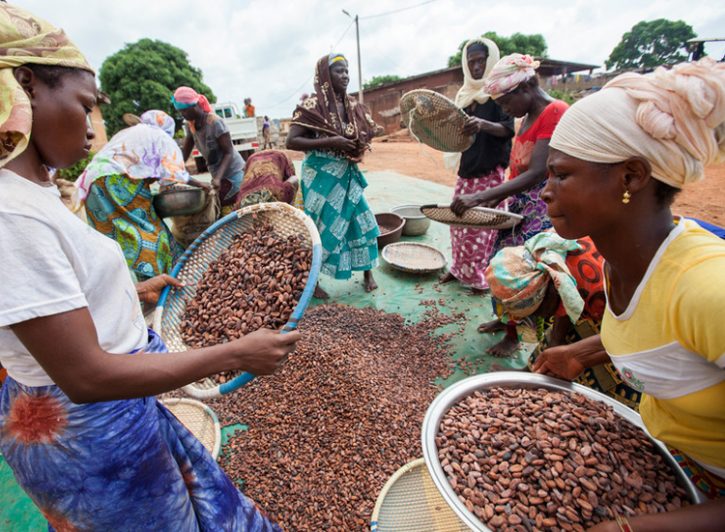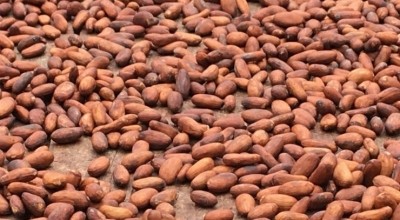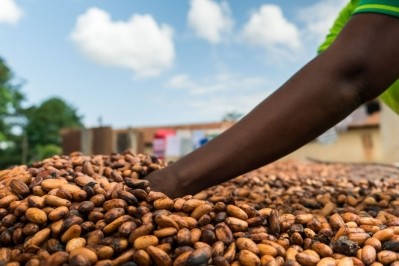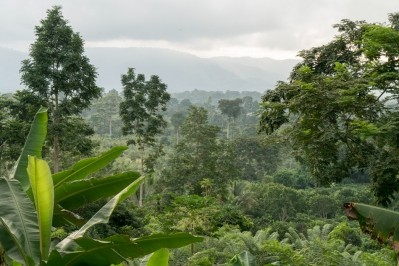Sustainability
‘Big Chocolate’ failing Ghanaian cocoa farmers over living incomes, says Oxfam

“There’s big money in chocolate - but definitely not for farmers,” said Oxfam International interim Executive Director Amitabh Behar. “Cocoa farmers work extremely hard, under gruelling conditions, yet can’t always feed their families.”
New analysis by the organisation reveals nine out of 10 cocoa farmers said they are worse off since the pandemic, while Oxfam alleges that world’s four largest public chocolate corporations, Hershey, Lindt, Mondelēz and Nestlé, have together made nearly $15 billion in profits from their confectionery divisions alone since the onset of the pandemic, up by an average 16% since 2020. They paid out on average more than their total net profits (113%) to shareholders between 2020 and 2022.
The Oxfam survey revealed up to 90% of Ghanaian cocoa farmers do not earn a living income, meaning they cannot afford enough food or other basics such as clothing, housing and medical care. Many of the 800,000 farmers in the country survive on just $2 a day.
Crop yields
According to its analysis, the sustainability programmes of 10 of the top chocolate manufacturers and traders operating in Ghana, all of which prioritize helping farmers produce more cocoa, none of achieved their stated goal of increasing cocoa production and, consequently, boosting farmer income. In fact, the crop yields of farmers in the corporations’ supply chains declined by 25% between 2020 and 2022.
A spokesperson for Lindt & Sprüngli told this publication that the company invested CHF 18.6 million ($20.7m) in cocoa sustainability programmes in 2021 and the Lindt Cocoa Foundation contributed an additional CHF 2–3 million annually in investments for farmers and communities.
"One of the goals of our Lindt & Sprüngli Farming Programme is to help address poverty, which is the systemic root cause of many sustainability challenges in the cocoa sector. Needless to say that we cannot achieve this alone. It needs the concerted, continued, compliant and honest efforts of untold numbers of stakeholders.
"We recognize that the price of cocoa is an important element to a sustainable cocoa sector. The price of cocoa that we pay is determined by the market price. The so-called 'farmgate price', i.e., the price the farmer receives for the cocoa, is determined either by the local market price or, in Ghana and Côte d'Ivoire, by the government.
"We also support the efforts of the governments in Côte d’Ivoire and Ghana to improve livelihoods of cocoa farmers with a Living Income Differential (LID) of USD 400 per ton. We have purchased cocoa with LID pricing and will continue to do so."
In its analysis, Oxfam said found that none of the premiums — an extra sum paid directly to farmers on top of the selling price — paid by the corporations meaningfully increased farmers’ incomes.
A corporate spokesperson at Hershey told ConfectioneryNews: "Hershey has had a long-term commitment to supporting increased incomes for cocoa farming households. We are investing in proven approaches such as cash transfers and village savings and loan associations (VSLAs), implementation of sustainable and regenerative farm management practices and creating greater access to education in cocoa growing communities. All aspects of our holistic Cocoa For Good strategy, including our new Income Accelerator being launched in Côte d’Ivoire this year, have been carefully designed with input from expert organizations and field researchers to address the underlying factors that contribute to low farmer incomes and to help support better livelihoods for farming households."
Living income
Cocoa farmers surveyed by Oxfam said they are being paid a premium of $35 to $40 per ton of cocoa. The average cocoa farmer in Ghana produces approximately one ton of cocoa annually. They need to earn $2,600 more per year to get a living income.
A Nestlé spokesperson said: “We believe that cocoa farmers should earn an income that allows them to maintain a decent and adequate standard of living for themselves and their families. While we cannot influence the farmgate prices due to the cocoa-trade structure in Ghana, we are doing everything we can to help cocoa-farming families close the living income gap. On top of the premium for certified cocoa and the Living Income Differential (LID) that Nestlé pays, we have been rolling out an income accelerator programme to improve the livelihoods of cocoa-farming families and support the transition to more sustainable cocoa farming. To date, we have reached over 10,000 farming households in Côte d’Ivoire, and we have already noticed encouraging results on the field in terms of improved productivity and reduced crop diseases. The programme will be extended to Ghana in 2024.”
In a statement, Oxfam said: ‘After decades of pledges to rid their supply chains of child labour, poverty and deforestation, chocolate corporations’ failure to pay prices that ensure a living income —let alone protect farmers’ incomes from free-falling— is another setback to global efforts to make chocolate more sustainable and ethical. More and more cocoa farmers are selling their land to illegal miners or turning to polluting ‘galamsey’ (artisanal mining) to supplement or replace their incomes.'
“Chocolate giants need to put their money where their mouth is,” said Behar. “They must rid themselves of their colonial legacy of extracting raw materials and keeping farmers in poverty while making astronomical profits for their rich shareholders. Without fair pricing and living incomes there will never be such a thing as ‘sustainable’ or ‘exploitation-free’ chocolate.”
Ghana produces around 15% of the world’s cocoa beans, but receives only about 1.5% ($2 billion) of the chocolate industry’s estimated annual worth of $130 billion. Around 60% of the world’s cocoa heads to Europe.
“Chocolate corporations need to close the living income gap for farmers. End of story,” said Behar. “They must significantly increase farmgate prices paid to farmers, and mitigate the impact of inflation on the rising costs of farming inputs and equipment. Transparency about their prices and premiums is also a bare minimum.”
- Mondelēz has so far not responded to a request for comment by ConfectioneryNews.














